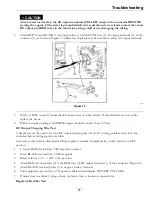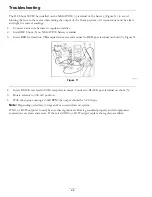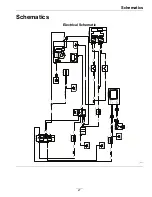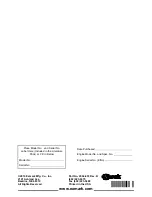
Troubleshooting
CAUTION
Attach meter test leads to the AC output terminals (YELLOW wires) in the connector BEFORE
starting the engine. If the stator is grounded (defective) and the meter test leads contact the center
DC output pin (RED wire) in the connector, arcing could occur, damaging the wiring.
4.
Attach RED (2) and BLACK (1) test lead probes to the YELLOW wire (4) AC output terminals (6), of the
connector (3), as shown in Figure 10. (Meter test clip leads may be attached to either AC output terminal).
g268086
Figure 10
5.
If NO or LOW output is found check for bare wires or other defects. If shorted leads are not visible,
replace the stator.
6.
With the engine running at 3600 RPM output should be no less than 26 Volts.
DC Output Charging Wire Test
A simple test can be used to test the DC output charging wire circuit. If a wiring problem exists it can be
corrected before testing regulator-rectifier.
Leave stator wire harness disconnected from regulator-rectifier. Equipment key switch must be in OFF
position.
1.
1. Insert RED test lead into VΩ receptacle in meter.
2.
Insert BLACK test lead into COM receptacle.
3.
Rotate selector to V= = (DC volts) position.
4.
Attach RED test lead probe (2) to the RED wire (5) DC output terminal (7), of the connector (Figure 10).
5.
Attach BLACK test lead probe (1) to negative battery terminal.
6.
Turn equipment key switch to ON position. Meter should display BATTERY VOLTAGE.
7.
If meter does not display voltage, check for blown fuse or broken or shorted wire.
Regulator-Rectifier Test
25




































